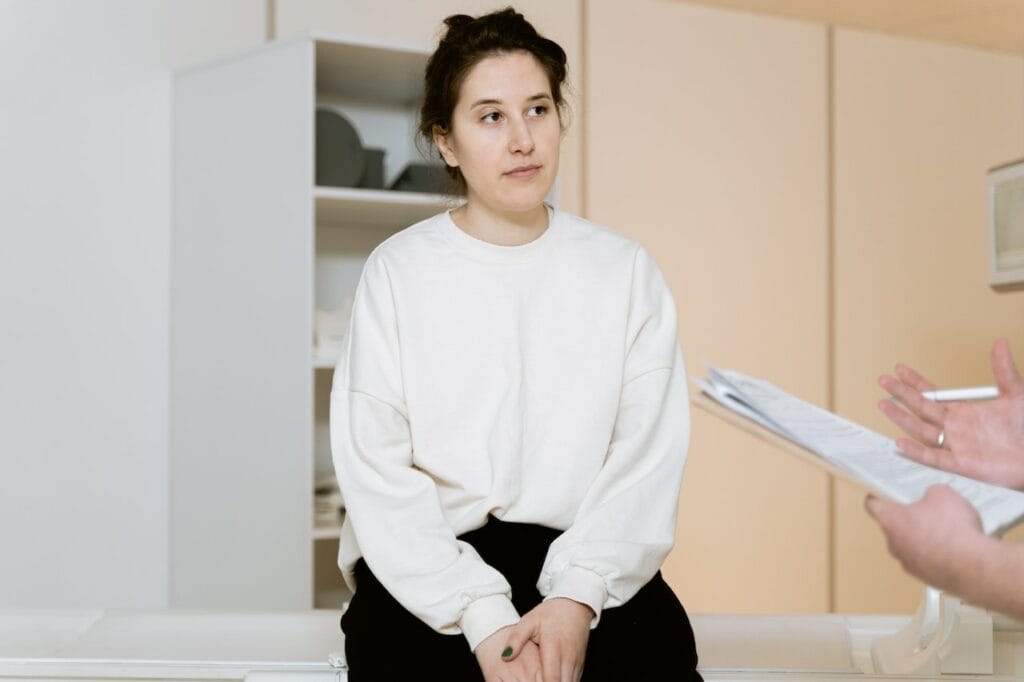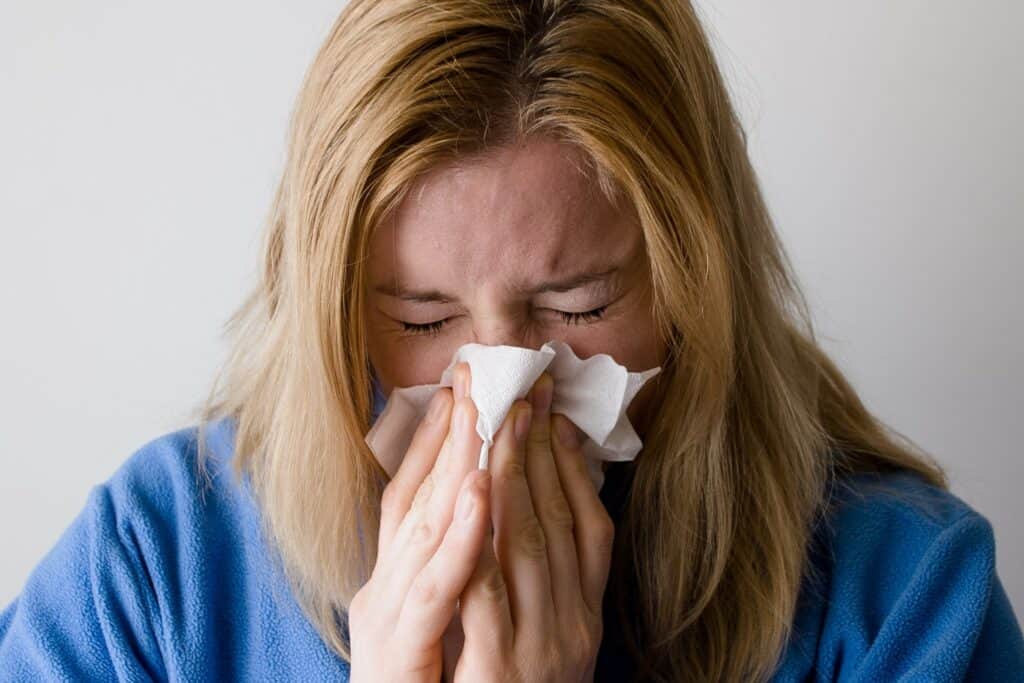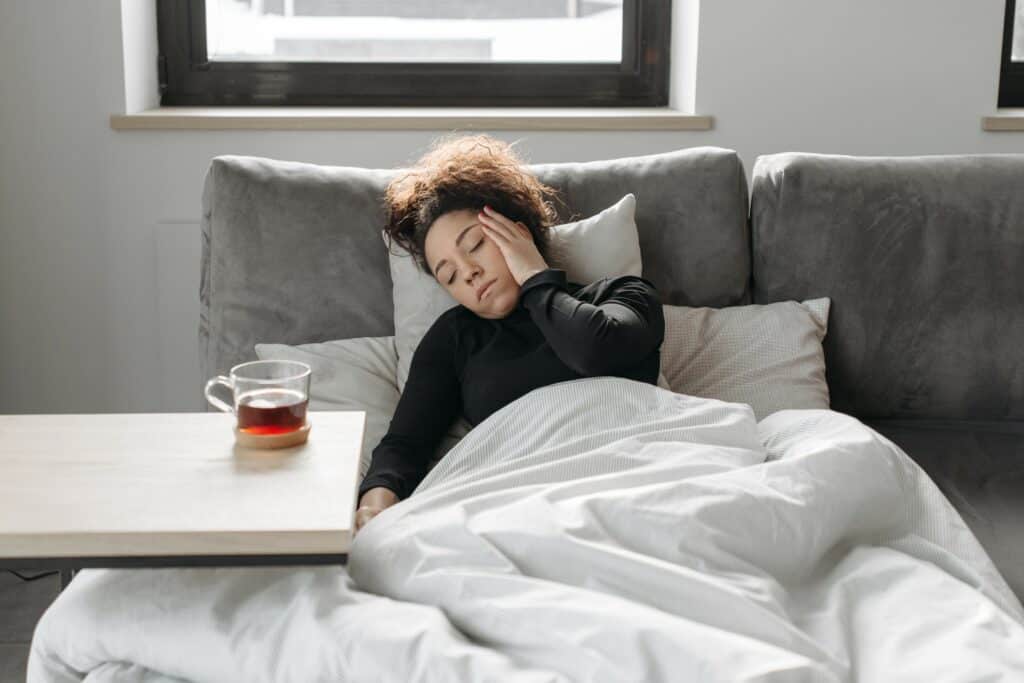Flu-like symptoms after C-section can be a cause for concern for new mothers. These symptoms can include fever, body aches, chills, and fatigue. While it is normal to experience some discomfort after surgery, it is important to understand the difference between normal postoperative symptoms and those that may indicate an infection or other complication.
Understanding Flu-Like Symptoms After C-Section After a C-section, it is common to experience some discomfort, such as pain at the incision site, cramping, and vaginal bleeding. However, if a woman experiences flu-like symptoms, such as fever, body aches, chills, and fatigue, it may be a sign of an infection or other complication. In this article, we will explore the common symptoms, possible causes, risk factors, treatment and recovery, and prevention strategies for flu-like symptoms after a C-section.
Key Takeaways
- Flu-like symptoms after a C-section can be a sign of an infection or other complication.
- It is important to understand the difference between normal postoperative symptoms and those that may indicate a problem.
- Women should seek medical attention if they experience flu-like symptoms after a C-section.
Understanding Flu-Like Symptoms After C-Section
After undergoing a C-section, some patients may experience flu-like symptoms. These symptoms can include fever, body aches, and fatigue. While these symptoms can be concerning, they are a normal part of the recovery process for many patients.

C-sections are major surgeries that involve cutting through the abdominal wall and uterus to deliver the baby. As with any surgery, the body responds with inflammation and an immune response. This can lead to flu-like symptoms, such as a fever and body aches.
In addition, the hormonal changes that occur during labor and delivery can also contribute to these symptoms. The body produces higher levels of certain hormones, such as prostaglandins and cytokines, which can cause fever and other flu-like symptoms.
It is important for patients to monitor their symptoms and report any concerns to their healthcare provider. In some cases, flu-like symptoms after a C-section may be a sign of infection or other complications. Patients should also rest, stay hydrated, and take any medications as prescribed by their healthcare provider.
Overall, flu-like symptoms after a C-section are a normal part of the recovery process for many patients. By understanding the causes of these symptoms and taking appropriate measures to manage them, patients can ensure a smoother and more comfortable recovery.
Common Symptoms
After a C-section, it is common to experience flu-like symptoms. These symptoms can be physical or emotional. Here are some of the most common symptoms:

Physical Symptoms
- Fever: A fever is a common symptom after a C-section. It is usually mild and goes away on its own within a few days.
- Chills: Chills are another common symptom after a C-section. They are usually a sign that the body is fighting off an infection.
- Headache: A headache can be caused by the stress of surgery or by the anesthesia used during the procedure.
- Body aches: Body aches are common after a C-section, especially in the back and abdominal area.
- Fatigue: Fatigue is another common symptom after a C-section. It can be caused by the stress of surgery and the demands of caring for a newborn.
Emotional Symptoms
- Mood swings: Mood swings are common after a C-section. Hormonal changes and the stress of surgery can cause mood swings.
- Anxiety: Anxiety is another common emotional symptom after a C-section. It can be caused by the stress of surgery and the demands of caring for a newborn.
- Depression: Depression is a serious emotional symptom that can occur after a C-section. It is important to seek medical attention if you experience symptoms of depression.
Shortness of breath and muscle aches are less common symptoms after a C-section, but they can occur in some cases. It is important to talk to your doctor if you experience any of these symptoms after a C-section.
Possible Causes

1. Infection
One possible cause of flu-like symptoms after a c-section is an infection. Infections can occur at the incision site or within the uterus. Bacteria can enter the body during surgery or through the incision site, leading to inflammation and a bacterial infection. Antibiotics are typically administered during and after surgery to prevent infections, but they may not always be effective. Symptoms of an infection may include fever, chills, redness or swelling at the incision site, and increased pain.
2. Reaction to Medication
Another possible cause of flu-like symptoms after a c-section is a reaction to medication. Pain medications and antibiotics are commonly prescribed after surgery, and some people may experience side effects. These can include nausea, vomiting, fever, and body aches. In rare cases, a severe allergic reaction may occur, which requires immediate medical attention.
3. Postpartum Depression
Postpartum depression is a common condition that affects many new mothers. It can cause a variety of symptoms, including fatigue, body aches, and flu-like symptoms. Women who have undergone a c-section may be at a higher risk of developing postpartum depression due to the stress of surgery and the recovery process. It is important to seek medical attention if symptoms persist or worsen.
Overall, flu-like symptoms after a c-section can be caused by a variety of factors, including infection, reaction to medication, and postpartum depression. It is important to speak with a healthcare provider if symptoms persist or worsen, as prompt treatment can help prevent complications.
Risk Factors
There are several risk factors that may increase the likelihood of experiencing flu-like symptoms after a c-section. These include:

- Diabetes: Women with diabetes may be at a higher risk of developing infections, which can lead to flu-like symptoms after a c-section.
- Obesity: Women who are overweight or obese may have a higher risk of developing infections and other complications after a c-section, which can lead to flu-like symptoms.
- Planned c-section: Women who have a planned c-section may have a higher risk of developing infections and other complications, which can lead to flu-like symptoms.
- Emergency c-section: Women who have an emergency c-section may have a higher risk of developing infections and other complications, which can lead to flu-like symptoms.
- Gestational diabetes: Women who develop gestational diabetes during pregnancy may have a higher risk of developing infections and other complications after a c-section, which can lead to flu-like symptoms.
It is important to note that not all women who have a c-section will experience flu-like symptoms, and not all women who have these risk factors will develop complications. However, it is important for women to be aware of these risk factors and to discuss them with their healthcare provider before and after a c-section.
Treatment and Recovery
After experiencing flu-like symptoms following a C-section, it’s important to focus on treatment and recovery. Treatment will vary depending on the specific symptoms experienced, but there are several common approaches to recovery.

1. Medication
Pain is a common symptom after a C-section, and medication can help manage discomfort. Doctors may recommend ibuprofen or acetaminophen (such as Tylenol) to help manage pain. It’s important to follow the recommended dosage and frequency provided by the doctor to avoid any potential complications.
2. Wound Care
Proper wound care is crucial to prevent infection and promote healing. Keeping the incision site clean and dry is important, and doctors may recommend using a sterile dressing to cover the area. It’s important to avoid any strenuous activity that could put pressure on the incision site, and to avoid soaking in water until the incision is fully healed.
3. Physical Recovery
Recovery time varies for each individual, but it’s important to take it slow and gradually increase activity levels. Doctors may recommend light exercise, such as walking, to promote healing and prevent blood clots. It’s important to avoid any heavy lifting or strenuous activity until cleared by a doctor.
4. Emotional Support
Recovering from a C-section can be emotionally challenging, and it’s important to seek support from loved ones and healthcare professionals. Talking to a therapist or joining a support group can also be helpful for managing any emotional challenges.
Overall, recovery from flu-like symptoms after a C-section can take time and patience. By following the recommended treatment and taking care of oneself, most individuals can recover fully and return to their normal activities.
When to Seek Medical Attention
After a C-section, it is common to experience flu-like symptoms such as fever, body aches, and fatigue. These symptoms usually subside within a few days. However, there are certain warning signs that indicate the need for immediate medical attention.
If the patient experiences a high fever (over 101 degrees Fahrenheit), it is important to seek medical attention. This could be a sign of a serious infection, such as endometritis or wound infection. Chest pain, shortness of breath, and excessive bleeding are also warning signs that require immediate medical attention.
In addition, if the patient develops a rash or hives, it could be a sign of an allergic reaction to medication or anesthesia. It is important to seek medical attention if this occurs.
Overall, it is important for patients to be aware of the warning signs and to seek medical attention if they experience any of these symptoms. Prompt medical attention can help prevent serious complications and ensure a speedy recovery.
Prevention Strategies
There are several strategies that can help prevent flu-like symptoms after a C-section. These strategies include:

1. Breastfeeding
Breastfeeding can help boost the immune system of both the mother and the baby. This can help prevent infections and flu-like symptoms after a C-section. Breastfeeding can also help speed up the healing process.
2. Showering
Taking showers instead of baths can help prevent infections. It is important to keep the incision area clean and dry. Showering can also help relieve pain and discomfort.
3. Endometritis
Endometritis is an infection of the uterus. It can cause flu-like symptoms after a C-section. To prevent endometritis, doctors may prescribe oral antibiotics.
4. Mastitis
Mastitis is an infection of the breast tissue. It can cause flu-like symptoms after a C-section. Breastfeeding can help prevent mastitis. It is important to empty the breasts regularly to prevent engorgement.
5. Urinary Tract Infection
Urinary tract infections can cause flu-like symptoms after a C-section. It is important to empty the bladder regularly. Drinking plenty of fluids can also help prevent urinary tract infections.
6. Stitches
Stitches can cause pain and discomfort after a C-section. It is important to keep the incision area clean and dry. Doctors may prescribe pain medication to help manage the pain.
7. Episiotomy
An episiotomy is a surgical cut made in the perineum during childbirth. It can cause pain and discomfort after a C-section. It is important to keep the area clean and dry. Doctors may prescribe pain medication to help manage the pain.
8. Uterine Infections
Uterine infections can cause flu-like symptoms after a C-section. To prevent uterine infections, doctors may prescribe oral antibiotics.
9. Oral Antibiotics
Doctors may prescribe oral antibiotics to prevent infections after a C-section. It is important to take the antibiotics as directed.
10. Healing Process
The healing process after a C-section can take several weeks. It is important to rest and avoid strenuous activities. It is also important to eat a healthy diet and stay hydrated.
11. Lochia
Lochia is the discharge that occurs after childbirth. It can last for several weeks. It is important to keep the area clean and dry. Doctors may prescribe pain medication to help manage the pain.
12. Signs of Infection
It is important to watch for signs of infection after a C-section. These signs include fever, chills, redness, swelling, and discharge. If any of these symptoms occur, it is important to contact a doctor immediately.
Postpartum Checkups and Follow-Up Care
After a C-section, it is important for new mothers to receive proper postpartum checkups and follow-up care. These checkups are crucial for monitoring the mother’s physical and emotional well-being, as well as the health of the baby.
During the postpartum checkup, the doctor will evaluate the mother’s incision site, blood pressure, and overall physical health. They will also discuss any concerns the mother may have and provide guidance on breastfeeding, pain management, and contraception.
In addition to physical health, postpartum checkups also address mental health. Postpartum depression and baby blues are common conditions that can affect new mothers. The doctor will screen for these conditions and provide appropriate referrals and treatment if needed.
It is recommended that new mothers have their first postpartum checkup within 6 weeks after delivery. However, if the mother is experiencing any concerning symptoms, such as fever, heavy bleeding, or severe pain, she should contact her doctor immediately.
Overall, postpartum checkups and follow-up care are essential for the health and well-being of both the mother and baby. By receiving proper care and monitoring, new mothers can recover safely and enjoyably from their C-section delivery.
Frequently Asked Questions
What are the signs of infection after a C-section?
Signs of infection after a C-section may include fever, chills, redness or warmth around the incision site, foul-smelling discharge, or increased pain or tenderness around the incision. It is important to contact your healthcare provider if you experience any of these symptoms.
Is it normal to run a fever after a C-section?
It is not uncommon to run a low-grade fever after a C-section due to the body’s response to surgery. However, if the fever is high or accompanied by other symptoms, such as pain or discharge, it may be a sign of infection and should be reported to your healthcare provider.
How long should my partner stay home after a C-section?
The length of time your partner should stay home after a C-section may vary depending on individual circumstances. It is important to discuss this with your healthcare provider and make a plan that works for your family.
What are some home remedies for reducing swelling around a C-section incision?
Some home remedies for reducing swelling around a C-section incision may include applying a cold compress, elevating the affected area, and taking over-the-counter pain relievers as directed. It is important to discuss any home remedies with your healthcare provider before trying them.
What antibiotics are used to treat C-section infections?
The antibiotics used to treat C-section infections may vary depending on the type and severity of the infection. Your healthcare provider will determine the appropriate antibiotic based on your individual circumstances.
What are the symptoms of a uterus infection after a C-section?
Symptoms of a uterus infection after a C-section may include fever, abdominal pain, foul-smelling discharge, and heavy bleeding. It is important to contact your healthcare provider if you experience any of these symptoms.

Iesha is a loving mother of 2 beautiful children. She’s an active parent who enjoys indoor and outdoor adventures with her family. Her mission is to share practical and realistic parenting advice to help the parenting community becoming stronger.
